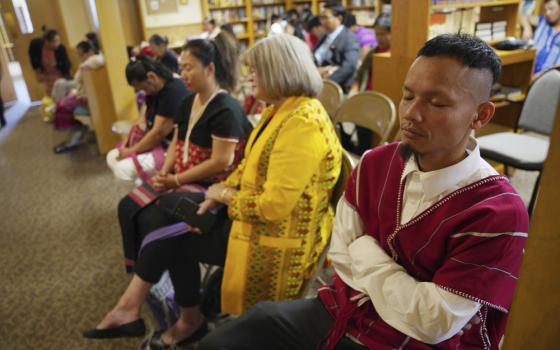Today is the feast of St. Walburga, born in Devonshire in 710 to St. Richard, a Saxon king, and Winna, a sister of St. Boniface, the Apostle of Germany.
When Walburga was eleven, her father placed her with the abbess of Wimbourne.
Walburga's father died on a pilgrimage to Rome, and her two brothers, Willibald and Winibald, joined their uncle Boniface in Germany to assist him in his work of converting the pagan tribes.
Walburga remained in England. She spent 27 years at Wimbourne.
"At Wimbourne she lived among a community of 500 Sisters who chanted the office, studied Scripture and the Fathers of the Church, Latin, the ordinances of the Church, Latin classics, and sometimes Greek. The nuns were manuscript copyists. They took care, too, of their own convents, of fields, mills, gardens, and stables. They did spinning, weaving tailoring, tanning, and cobbling. They made vestments for the altar. Their religious life included the rite of consecration of Virgins."
--from The Meaning of the Mountain: A History of the First Century of Mount St. Scholastica, by Sr. M. Faith Schuster, OSB, Helicon Press, 1963
St. Boniface wrote to Wimbourne in the year 748, asking Walburga to come to him and her brother in Germany.
Abbess Tetta sent several nuns, including Walburga, Chunihild, Berktgild, Chunitrud, Tekla, and Lioba to Bavaria.
Winibald built a church and double monastery at Heidenheim in Suevia for himself and Walburga in 752. When he died in 761, Walburga became abbess of the entire monastery. She ruled the monks and nuns with wisdom and grace. She continued her scholarly work and wrote, in Latin, accounts of her brothers' lives. Many miracles were attributed to St. Walburga, before and after her death.
When she died on February 25, 779, her brother, Bishop Willibald, buried her at Heidenheim. A century later, her body was translated to Eichstätt. In 1035, Count Leodogar von Lechsgemund und Graibach established a Benedictine convent near her tomb, which still exists: St. Walburga's Abbey.
This year is Walburga-Jubiläum at Eichstätt, the 1300th anniversary of the birth of St. Walburga. Click here for the schedule of events for today and for the year, for publications planned for the jubilee year, and for other information about Die Benediktinerinnenabtei St. Walburg. (The links at the left of the page will lead to pictures of the nuns at work and at prayer.)
Click here for a YouTube video of Eichstätt. The cruet St. Walburga holds represents the therapeutic Oil of St. Walburga.
Nearly all American Benedictine women can trace their congregations' origins back to Eichstätt. The first Benedictines to come from St. Walburga's, in 1852, at the request of Abbot Boniface Wimmer, were Mother Benedicta Riepp, who had been novice mistress at Eichstätt, Sister Walburga Dietrich, and Sister Maura Flieger. They established a convent at St. Mary's, in Elk County, Pennsylvania.
Click here for some images of St. Walburga.
A very happy feast of St. Walburga to all Benedictines!



